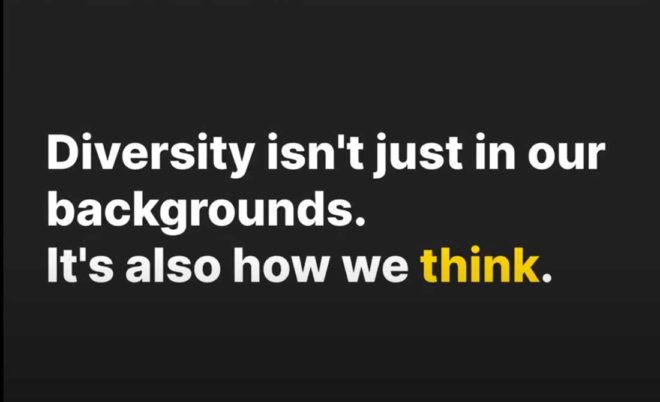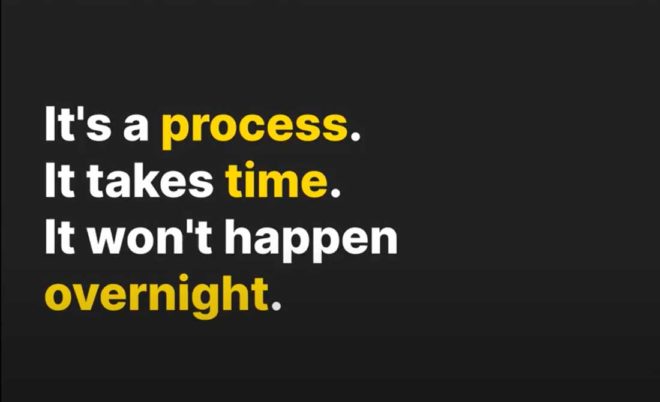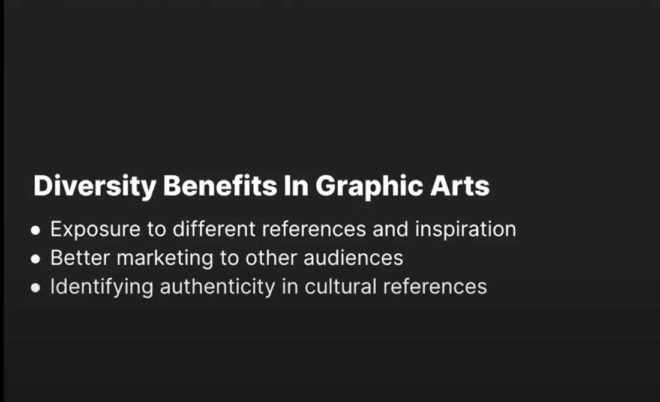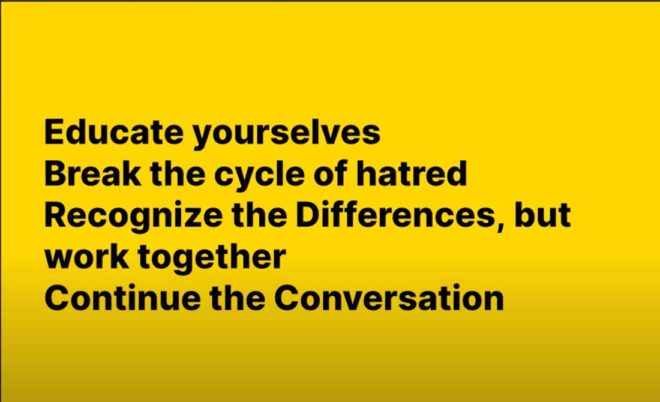03 Jun Member Spotlight: Kevin Baculi on Diversity from an AAPI Perspective
In preparation for May’s Asian American Pacific Islander (AAPI) Month, the Western Region hosted a presentation on Diversity in the Guild, given by designer Kevin Baculi. Baculi shared his insights based on his personal experience as a first-generation Asian American of Filipino descent. We caught up with him for a deeper conversation about how graphic artists can approach diversity and how we can build community from many backgrounds.
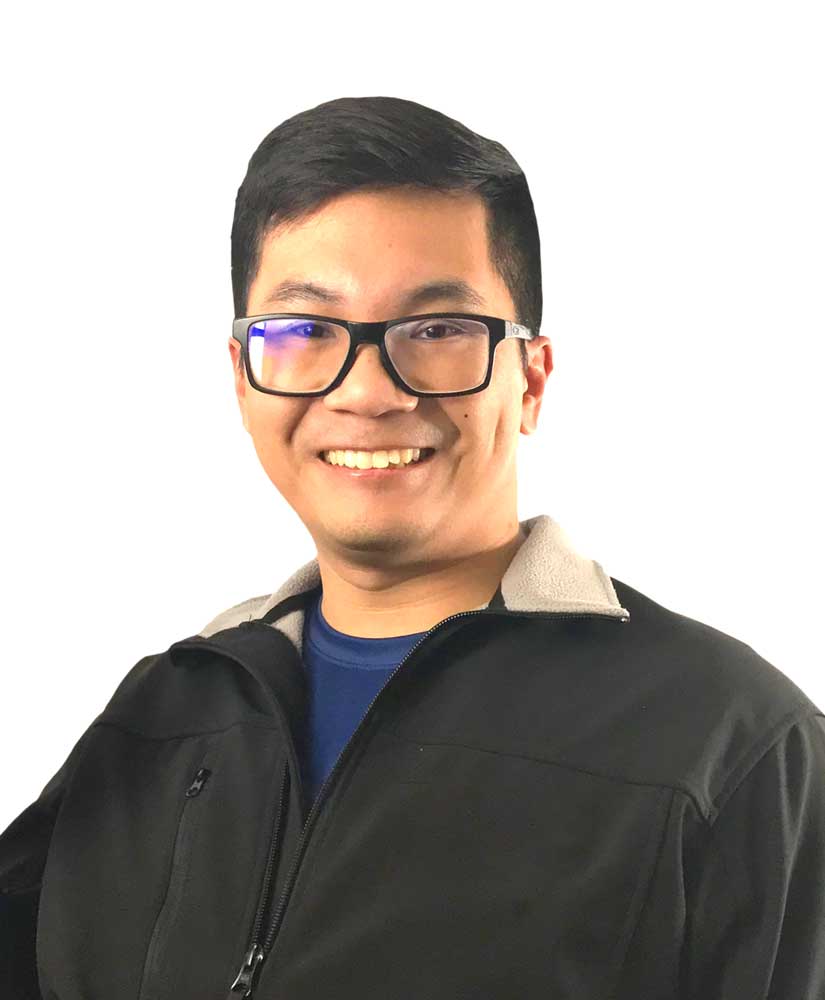
What was the impetus for your presentation on AAPI diversity?
At the outset I just want to make it clear that I’m speaking from my personal experience. Although some may see me as an ambassador for the AAPI community, and although I talk a lot with other Asian Americans, my views are not representative of the AAPI community as a whole..
The Western Region wanted to have a diversity event, so I suggested something for AAPI Month in May. Mainly I wanted to educate people on the AAPI community. I wanted to talk about not just the differences between groups, but also the similarities the AAPI community shares with other communities.
“When we learn about diversity, and we are surrounded by people who had diverse backgrounds, different to that of our own, we grow as people…. We learn about the world, and we learn that there is more in the world than just who we are as an individual.”
— Kevin Baculi, “Diversity in the Guild” presentation
You talked in your presentation about the benefits of living and working in a diverse community. What advice do you have for us to celebrate differences and find common ground?
I don’t want people to think that because somebody looks different or comes from a different background that they are that much different. It is counterintuitive to think of people as so different from us that we have to treat them differently or give them special privileges.
Diversity isn’t just about how we look on the outside; it’s also about how we think. If everyone thinks the same, that’s not really diversity. Diversity also means to be diverse in skills, in beliefs, in thought systems – and that makes people successful. I don’t want people to think that if somebody is from a different community or holds different beliefs that they are so much different. It’s important to perceive our differences but also understand how we are the same.
I noticed that when people introduce new things to each other, people become afraid of offending one another. So I think people should listen and hear each other out. Just listening to other people is one of the greatest feats somebody can do. Being offended shouldn’t be where the conversation stops.
I don’t look like everybody else. But I also don’t get offended when people ask “Where are you really from?” It’s okay for people to be curious.
Cultural literacy is particularly important for designers and illustrators, and cultural appropriation is a hot topic. Some people grab imagery and symbols from other cultures without thinking about whether what they’re doing is culturally sensitive, and other are so sensitive to other cultures that they think one should avoid things such as wearing clothing from other cultures (such as kimonos). What advice do you have for designers to become more culturally astute? How can people know when they want to use a symbol or image that they’re not transgressing a culture?
I don’t know why, but sometimes the people freaking out the most about appropriation are outside of the community. Personally, I don’t care if people wear a Filipino barong (the national dress shirt). If I see someone who isn’t Filipino wear it, I think, “More power to you!” I love it when people want to learn more about Filipino or Asian cultures. It’s awesome because it shows that somebody appreciates what we’re doing. It’s different if somebody is making fun of another culture, but I have no problem with people who want to embrace Filipino culture.
It also depends on what the person wants to embrace. Often people want to embrace something because it resonates with them. For example, I read an article about someone who named their restaurant Barkada – a Filipino word that means a group of friends. People freaked out and said he shouldn’t use the word because he wasn’t Filipino, but the word meant something to him. But in addition to understanding why something resonates with you as a designer, designers should do the research and find out what it means in the original culture.
Slides from the AAPI Diversity in the Guild presentation by Kevin Baculi.
As a first-generation Filipino American, has your family’s cultural background influenced you in any way as a designer?
It hasn’t really influenced me as a designer. The one thing I can say is that I have a bit more of an understanding of the Asian context. But I have yet to utilize that knowledge. There’s not too much that reflects in my current work as a designer.
In your presentation, you pointed out that Asian cultures have their own issues with tolerance and bias. Can you give us some examples?
There is discrimination within Asian countries, certainly when it comes to skin color. In the Philippines, people can make fun of people who are really dark- or really light-skinned. For example, there is a rap artist, Ez Mil, who raps about how people made fun of him by saying he’s half-white.
“Ever since bata ako [I was a kid] I’ve been kinda discriminated in my home country
Sure some will be like “Luh Amputi Puti mo Tisoy [You’re such a white half-Pinoy]
I ain’t tisoy [half white] I am pinoy! [Filipino]”
— Ez Mil, Panalo
So there is discrimination in Asian countries because of characteristics like skin color that people don’t choose to have. That’s a commonality with other countries and cultures.
Another type of discrimination that is quite harmful is smart-shaming: making fun of people who want to learn English and actually want a better education by reading books. One of the saddest things I’ve heard about is smart shaming in the Philippines since it’s a developing country and it needs more educated people. I don’t travel very often to Asian countries or the Philippines, but I hear about this from friends who do travel and are immersed in the Filipino communities.
From its history, the Philippines is multicultural, but we don’t think of ourselves as a mix of Asian, Spanish, and other cultures by default. We think of ourselves as Filipino first before we think of ourselves as a mix. Yes, we are a mix of many different cultures, but that doesn’t necessarily translate to openness to different cultures. When you’re in a Filipino village you’re surrounded by people who mostly look like you – and that’s true for a lot of countries which are also mostly homogenous. Any time someone different comes by — a white person or a black person – those people stand out. You’re going to stop and stare, and be curious.
“When we expose ourselves to different references and inspirations, our ideas flourish.”
— Kevin Baculi, “Diversity in the Guild” presentation
Have you faced any discrimination or a lack of acceptance as an AAPI professional designer?
No, I haven’t had any difficulty with acceptance as a designer from the design community or in business. But I did face difficulty in having my family accept me as a designer. I originally wanted to study culinary arts when I was in high school, and then I transitioned to studying philosophy in college. My dad didn’t like either choice.
There is a stereotype that people from the Philippines will go into the military, become engineers, or go into nursing. That expectation was placed upon me from adolescence from my family and close group of friends. There’s nothing wrong with those fields, but that’s just not what I wanted to do.
My high school offered two pre-medical tracks and a culinary track. There were only two Asians in the culinary track out of 70-80 students total. The majority of the Asian students were in the pre-medical tracks, so people would always ask what medical track I was in. Dealing with that nonsense was hilarious.
Why didn’t you become a chef? How did you become a designer?
When I was in high school, I loved both fine dining and working on the line, making food very quickly on the flattop. But I know how taxing being a chef can be. I once worked 12 hours straight without stopping, without even a bathroom break. That would be very hard for me to do right now. While I love the creative aspect of cooking, I don’t regret where I am right now.
I went to college for philosophy, since I was really interested in metaphysics. But as I traveled further and further into philosophy, I realized it wasn’t what I wanted to do. At one point I realized we were arguing about the meaning of words, and I wondered who this would help.
I had to drop out of school for financial reasons, and I worked for about a year. Then I enrolled some design bootcamps, and I found design was cool and interesting. I started off doing digital flyers, and then I moved on to creating logos, and then went into front-end web development.
That’s how I ended up where I am now. I got my first full-time staff job last November. Now I am a project manager. I also do photo-editing and branding, and even business development. Before then I was doing freelance work. In fact, I wasn’t able to work much of 2020 because of COVID.
“When we see stuff happen in our communities, address it, call it out. Start the conversation. Because the worst thing to say is actually nothing. When we don’t say anything about anything, that’s letting people win their battle of discrimination.”
— Kevin Baculi, “Diversity in the Guild” presentation
You produce these cool messages about life and design, which you publish on Instagram. How did you get started doing those?
Those messages are an amalgamation of a lot of things I’ve experienced about the world. I know that’s a lot for someone who’s only 26 to say, but I’ve really tried to learn a lot about life, about psychology and motivation, and I want to share with the world the things that have helped me move on through my darkest times.
Now that I’m more involved in the design community, I’ve realized that if I have a message to send to the world, I have to market it. I plan those messages with a planning calendar, but sometimes I post things very last minute, if something comes into mind.
What got you involved with the Graphic Artists Guild? What things would you like to see the Guild do?
One of my teachers at a design bootcamp recommended that I check out the Guild for its resources, so I joined to see what would happen. I got a lot of resources right off the bat! I was a member one-and-a-half years before I became active with volunteering. When COVID hit, I became even more involved. I love the Guild community. I love meeting new people and networking.
I would love to see more Guild workshops. There are already amazing designs in the member portfolios, so I’d love to see those more members highlighted. The Guild advocacy is amazing, so never stop doing that. I know there’s a lot of community events – keep having those.
At the end of the day, people may align with the Guild as an organization, but they align with the people first. The Guild should do more outreach to young designers and keep building that community. Everyone is young and stupid at some point, but why not just be young – let’s take out the stupid part.
Kevin Baculi is a graphic designer and Project Manager at AAMP Agency in Las Vegas, Nevada. He also is one of the Graphic Artists Guild’s Associate West Region Representatives.

